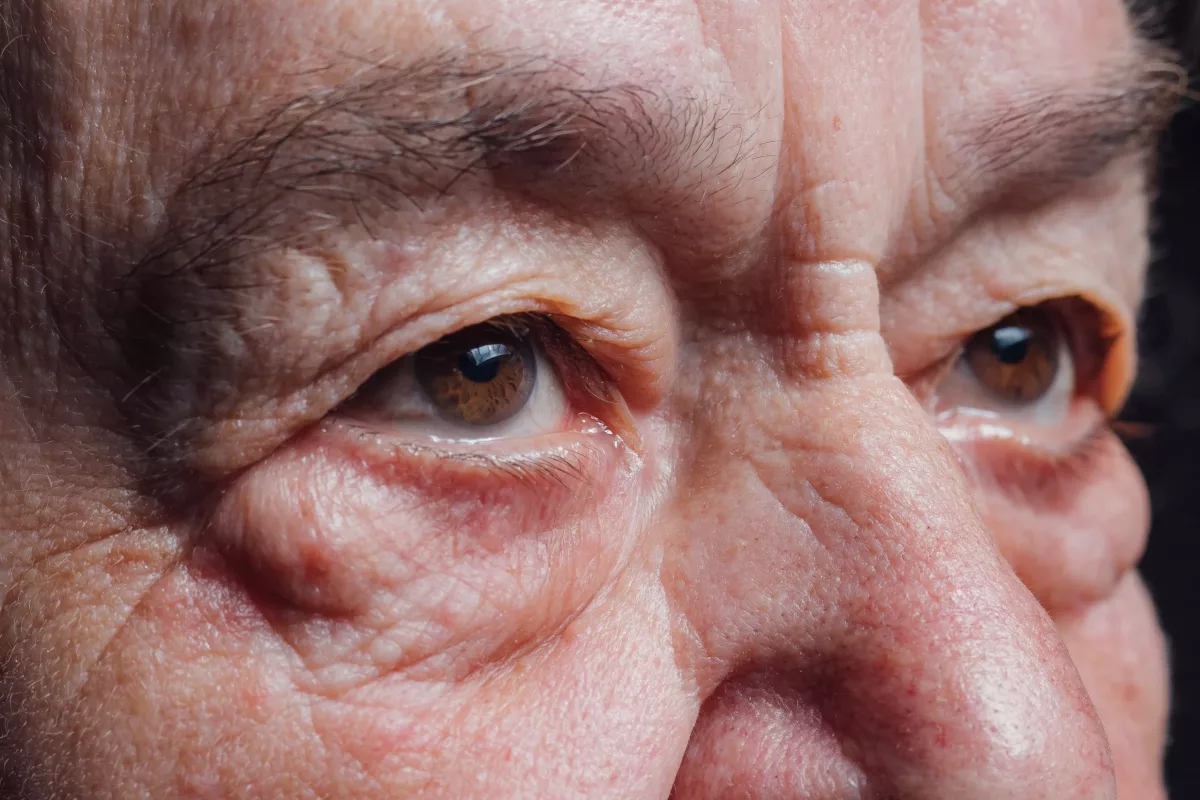The sclera is the white part of the eye. An eye condition in which the white part of the eye becomes red, swollen, and painful is called scleritis. If you ignore the symptoms and do not get treatment, it may lead to permanent damage to your eye.
Furthermore, the pain caused by this disorder often worsens with eye movement. Usually, physicians treat this condition with corticosteroids and nonsteroidal anti-inflammatory drugs (NSAIDs). While scleritis may occur due to an injury, it may also happen due to an underlying inflammatory disease. It is very important to get treatment because it does not go away on its own.
Types of Scleritis
Physicians have divided this eye disorder into two main types. For example, the anterior (the front of the sclera) and posterior (the back of the sclera). Furthermore, both types of scleritis can be diffuse, nodular, or necrotizing. For example:
- Diffuse scleritis – This is the most common type of scleritis, and it spreads all across the sclera.
- Nodular scleritis – In such cases, it appears in one spot of the sclera. Usually, people can see a nodule (lump).
- Necrotizing scleritis – This is the most severe type of scleritis, and it may destroy the eye tissue, which often leads to the loss of the eye. Furthermore, there is a subtype of necrotizing scleritis that may cause perforations. It is called scleromalacia perforans, and it accounts for 4% of all diagnosed scleritis.
Generally, anterior scleritis is considered the most common type of this eye disorder. The second type of the disease that negatively affects the back of the sclera accounts for 10% of all diagnosed scleritis.
Relatively, this is a rare health condition that affects about 2 to 5 out of 100,000 people each year in the U.S.
Symptoms
Those who develop scleritis often experience the following symptoms. Check below some examples:
- Swelling and redness of the sclera
- Tenderness and pain in the eye that worsens with eye movement or when you wake up at night. Sometimes, it may spread to other parts of the face.
- Watering (tearing) eyes
- Photophobia (increased sensitivity to light)
Do not hesitate to visit a doctor if you notice any of the previous symptoms.
Causes
Physicians cannot identify the exact cause of scleritis. In such cases, the condition is called idiopathic scleritis. However, in most cases, people develop scleritis due to the following diseases. For example:
- Rheumatoid arthritis – This is an autoimmune disorder that negatively affects joints throughout the body. Usually, this condition is associated with scleritis.
- Connective tissue diseases – These diseases (such as systemic lupus erythematosus) cause inflammation throughout the body, including the joints, skin, and other organs such as the lungs, brain, kidneys, and heart.
- Inflammatory bowel disease (IBD) – This medical term refers to a group of health conditions that cause chronic (long-lasting) inflammation in the bowel.
- Sjögren’s syndrome – This is another autoimmune condition that affects the gland responsible for moisture in the eyes, mouth, and vagina.
- Scleroderma – Those who develop this disorder may notice that normal tissue is replaced with a thick and fibrous one.
- Granulomatosis with polyangiitis – This condition often occurs due to inflammation within the tissues and blood vessels that cause damage to multiple organs in the body.
Sometimes, scleritis may be linked with the following health conditions. Examples include:
- Infections – There are some infections (including bacterial, viral, and fungal) that may cause infectious scleritis. Another condition that may cause this disorder is Lyme disease (Lyme scleritis).
- Trauma or injury to the eye – Any procedure or surgery to the eyes increases the risk of developing infectious scleritis.
- Medicines used to treat or prevent bone conditions – Sometimes, doctors prescribe Bisphosphonates to treat bone conditions. However, these medications may cause inflammatory eye reactions.
Risk Factors
Healthcare professionals have identified some factors that could elevate your risk of developing scleritis. Check below some examples:
- Age – While scleritis may occur at any age, people between the ages of 47 to 60 are more likely to develop it.
- Sex – Scleritis is more common in women than in men.
- Autoimmune disorders – The risk of scleritis significantly increases if you have an autoimmune condition.
- Eye surgery
Complications
Those who suffer from scleritis may also experience some complications, especially if they do not get treatment. For example:
- Keratitis
- Uveitis
- Staphyloma formation
- Retinal detachment
- Scleral perforation
- Cataracts
- Glaucoma
- Vision problems (including vision loss)
- Chronic pain
- Increased risk of recurrent scleritis
This article does not contain a complete list of scleritis complications. However, you can consult with your healthcare professional about ways to reduce the risk or prevent these complications.
How to Prevent Scleritis?
Commonly, it is not possible to prevent this condition, but you can take some steps to reduce the risk. For example, wear required eye protection at work or when participating in contact sports. To reduce the risk of eye infections, it is advised to wash hands with soap and warm water regularly.
Diagnosis
First, physicians will perform an eye examination to check for abnormalities linked to the disease. They may also ask some questions about the medical history and symptoms. Usually, to confirm the condition and determine the extent of damage, doctors may perform some tests. These include a slit lamp examination, biopsy (rarely), and imaging tests (such as ultrasound or CT scans).
Treatment
The treatment for people with scleritis is often different because it depends on several factors. These include the severity and cause of the condition, age, overall health, and preferences. For instance, if you develop a mild form of scleritis, doctors may recommend nonsteroidal anti-inflammatory drugs (NSAIDs). However, if you have a severe form, physicians usually prescribe systemic corticosteroids (such as Prednisone).
If you develop a recurrent scleritis, it is often treated with intravenous (IV) corticosteroids. When the cause of scleritis is an infection (including bacterial, viral, or fungal), doctors prescribe antibiotics, antifungal, or antiviral medications.
For people who develop necrotizing scleritis, doctors recommend immunosuppressants (such as Cyclophosphamide, Methotrexate, or Mycophenolate mofetil) or biologic agents (including Rituximab and Adalimumab).
Frequently Asked Questions
What can I expect if I have scleritis?
It is important to get treatment as soon as possible because this condition does not go away on its own. Without treatment, it may lead to serious complications (such as vision loss). Your physician may also prescribe some additional medications to treat autoimmune conditions, especially if you develop posterior necrotizing scleritis.
What is the difference between scleritis and episcleritis?
While scleritis negatively affects the sclera, episcleritis impacts the outermost layer of tissue of the sclera (also known as episclera). In most cases, episcleritis goes away on its own.
What is the cause of scleritis?
In most cases, people develop scleritis due to autoimmune disorders (especially those who have rheumatoid arthritis or systemic lupus erythematosus). Sometimes, physicians cannot identify what causes scleritis. In such cases, the condition is called idiopathic scleritis. Ask your healthcare provider if you have additional questions.




